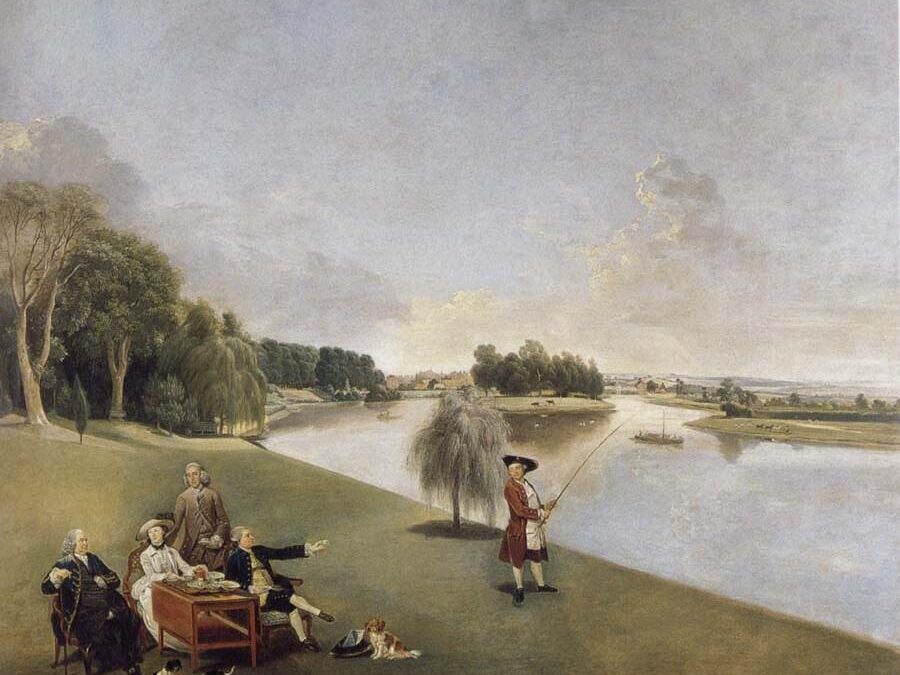 Zoffany’s The Garden of Hampton House, with Mr and Mrs David Garrick Taking Tea is a conversation portrait of the Garricks on their lawn in Twickenham. The occasion is a tea party. The group includes Garrick, gesturing towards his brother David, with the fishing rod,...
Zoffany’s The Garden of Hampton House, with Mr and Mrs David Garrick Taking Tea is a conversation portrait of the Garricks on their lawn in Twickenham. The occasion is a tea party. The group includes Garrick, gesturing towards his brother David, with the fishing rod,...
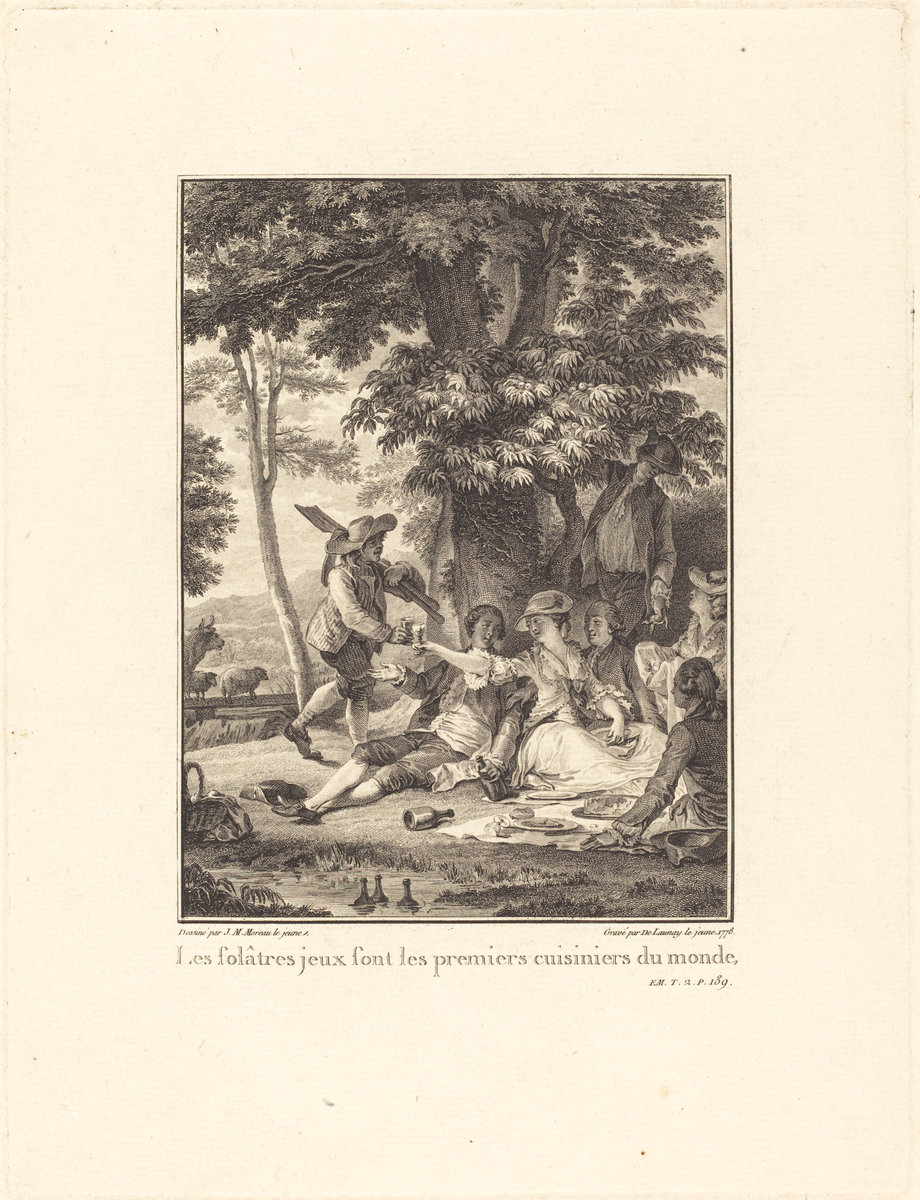 Rousseau was not thinking of a pique-nique when he wrote, “The turf will be our chairs and table, the banks of the stream our side-board, and our dessert is hanging on the trees.” He knew that pique-nique was an indoor meal for which friends shared the...
Rousseau was not thinking of a pique-nique when he wrote, “The turf will be our chairs and table, the banks of the stream our side-board, and our dessert is hanging on the trees.” He knew that pique-nique was an indoor meal for which friends shared the...
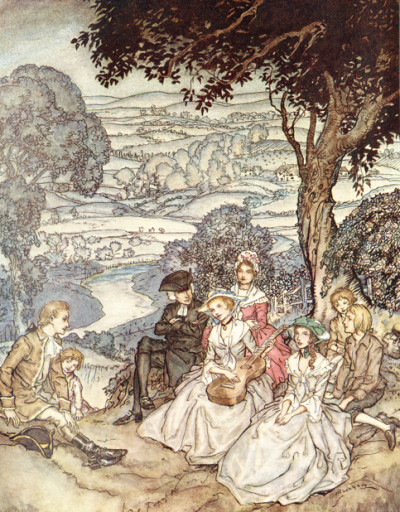 Goldsmith does not use the word picnic, but two such episodes in The Vicar of Wakefield exist. They are so obvious that in English Picnics, Georgina Battiscombe credits with the first “picnics” in English literature. If only he had used the word! Goldsmith...
Goldsmith does not use the word picnic, but two such episodes in The Vicar of Wakefield exist. They are so obvious that in English Picnics, Georgina Battiscombe credits with the first “picnics” in English literature. If only he had used the word! Goldsmith...
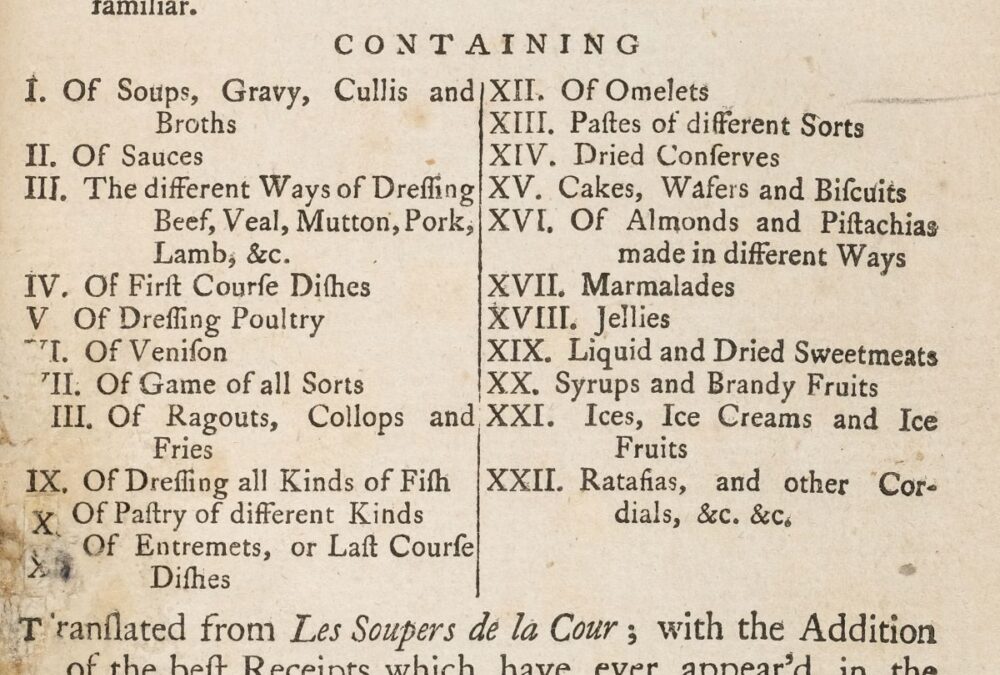 Among Clermont’s recommendations for traveling is a cold Perigord pie. It’s an expensive food ordinary folks might not afford, but a favorite of the posh Pic Nic Club of London. clermont’s text is a translation of Menon’s 1755 Soupers de la cour. Pâté de...
Among Clermont’s recommendations for traveling is a cold Perigord pie. It’s an expensive food ordinary folks might not afford, but a favorite of the posh Pic Nic Club of London. clermont’s text is a translation of Menon’s 1755 Soupers de la cour. Pâté de...
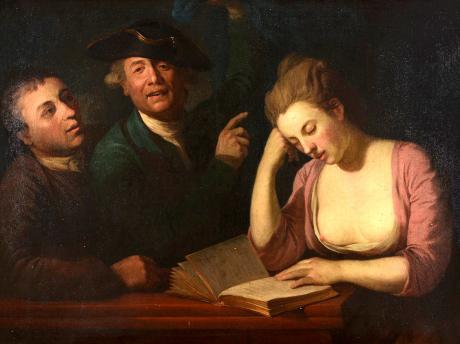 Samuel Foote’s comedyThe Nabob, now obscure, is the first linkage of picnic with the euphemism “nick-nack.” He used in the sense of dining en piquenique, which suggests familiarity. The alliterative corruption is meant to be humorous for those in the...
Goldsmith’s “Retaliation” left unfinished at his death, alludes to dining “en piquenique” with mentioning the word. Motivated for being slighted by his friends, Goldsmith decided to get even at the dinner table. Attempting to get even with slights endured from...
Samuel Foote’s comedyThe Nabob, now obscure, is the first linkage of picnic with the euphemism “nick-nack.” He used in the sense of dining en piquenique, which suggests familiarity. The alliterative corruption is meant to be humorous for those in the...
Goldsmith’s “Retaliation” left unfinished at his death, alludes to dining “en piquenique” with mentioning the word. Motivated for being slighted by his friends, Goldsmith decided to get even at the dinner table. Attempting to get even with slights endured from...
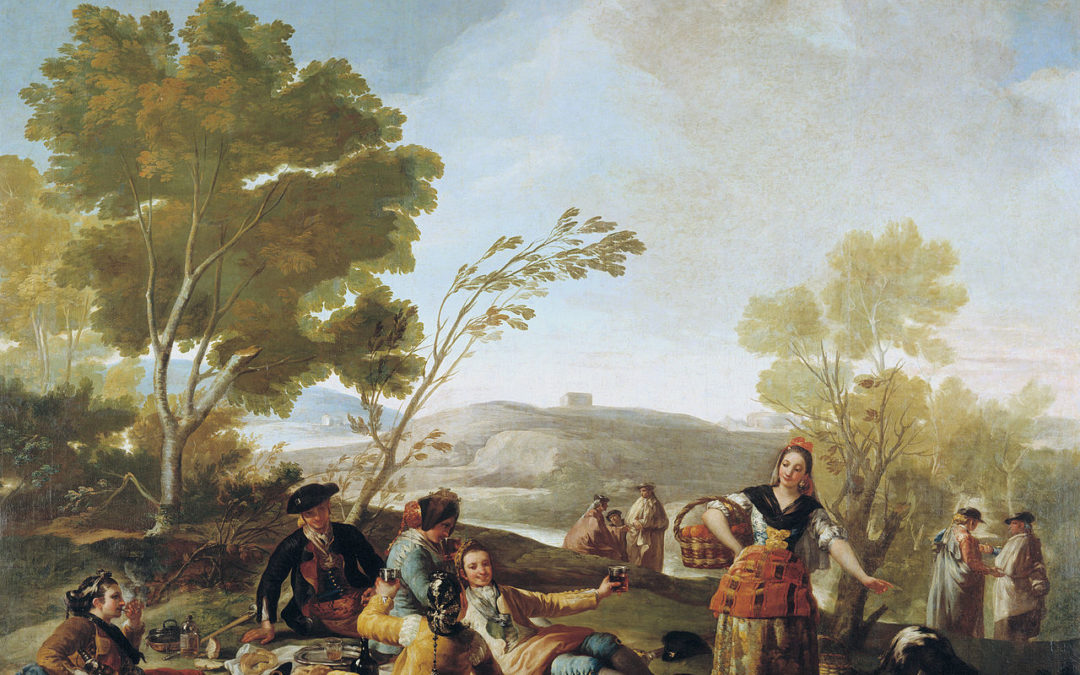 Merienda a orillas del Manzanares [Picnic At the Edge of the Manzanares River] is a painting for a tapestry intended for the dining room of the Prince and Princess of Asturias in the San Lorenzo Palace in Madrid. Goya described the subject as a merienda, a snack, or a...
Merienda a orillas del Manzanares [Picnic At the Edge of the Manzanares River] is a painting for a tapestry intended for the dining room of the Prince and Princess of Asturias in the San Lorenzo Palace in Madrid. Goya described the subject as a merienda, a snack, or a...
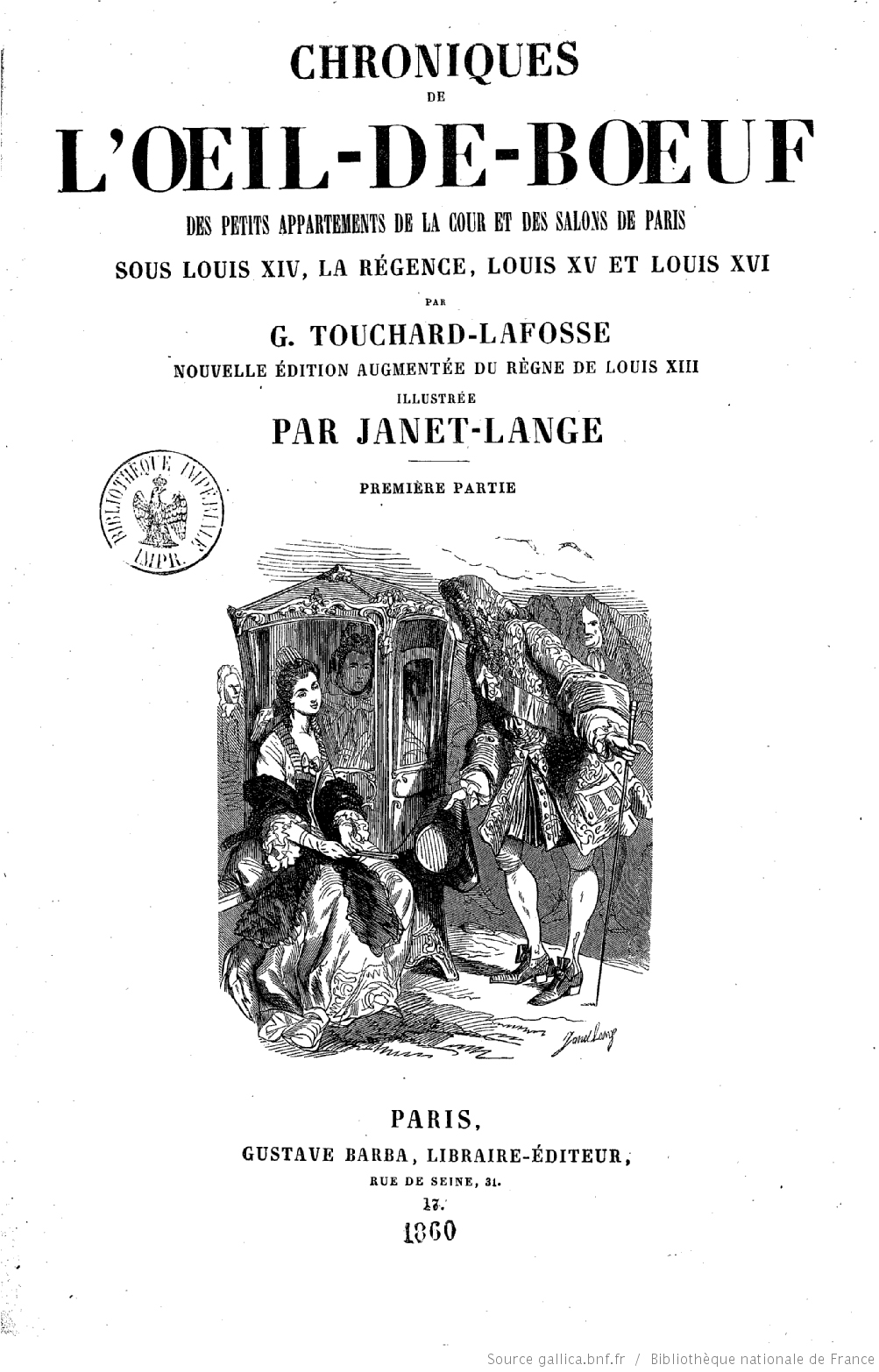 Oeil-de-boeuf is Touchard-Lafosse’s pseudonym used to sign off on his gossip reports about Louis XIV’s court and Parisian society Oeil-de-boeuf is a circular window, often indoors, above a doorway. As a metaphor, it suggests gossip that is sexually tinged or...
Oeil-de-boeuf is Touchard-Lafosse’s pseudonym used to sign off on his gossip reports about Louis XIV’s court and Parisian society Oeil-de-boeuf is a circular window, often indoors, above a doorway. As a metaphor, it suggests gossip that is sexually tinged or...
 Lima was a thriving major colonial town now grown into Chile’s capital and largest city with 10 million. Two centuries ago, an unidentified artist of the Lima School painted A Merry Company on the Banks of the Rímac, a happy picnic in which elegant aristocrats engaged...
Lima was a thriving major colonial town now grown into Chile’s capital and largest city with 10 million. Two centuries ago, an unidentified artist of the Lima School painted A Merry Company on the Banks of the Rímac, a happy picnic in which elegant aristocrats engaged...
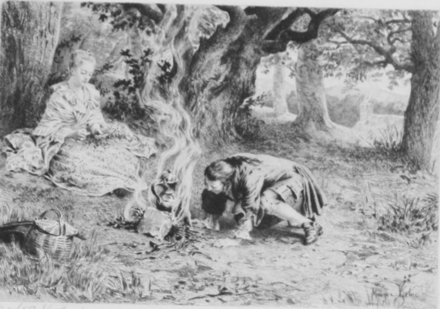 Les Rêvieries du Promeneur Solitaire or Reveries of a Solitary Walker was written in 1776-78, left unfinished, and published posthumously in 1782. It’s composed of ten “walks” or personal essays; the fourth includes the episode about dining in Madame...
Les Rêvieries du Promeneur Solitaire or Reveries of a Solitary Walker was written in 1776-78, left unfinished, and published posthumously in 1782. It’s composed of ten “walks” or personal essays; the fourth includes the episode about dining in Madame...










